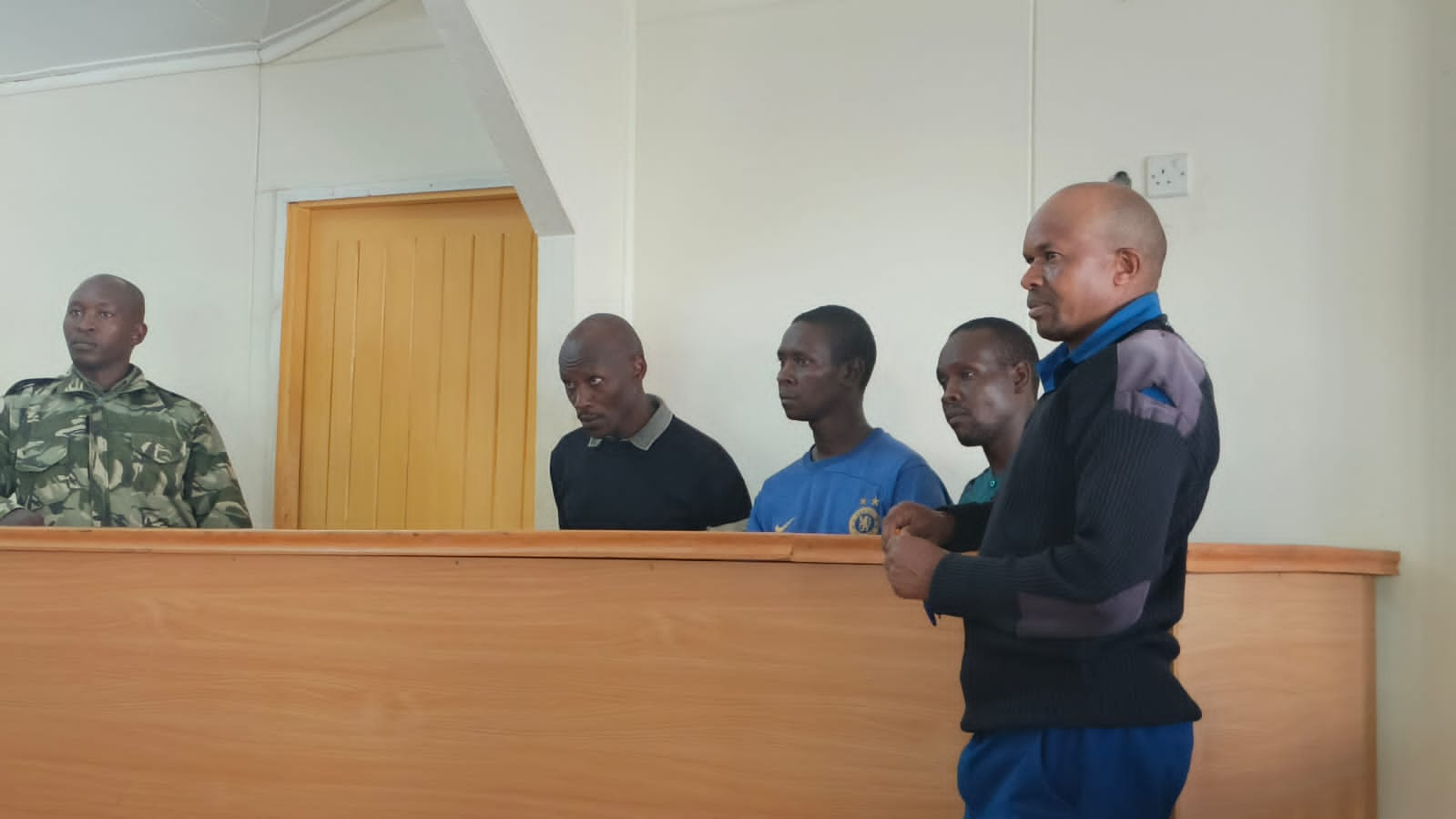Peace is an easy thing to overlook when it surrounds you. In Kenya, children stream into school gates every morning, clutching exercise books and lunch tins, chatting freely as teachers prepare lessons in calm, predictable classrooms. The school bell rings on time, lessons progress without interruption, and pupils return home safely in the evening. This quiet rhythm feels normal, almost automatic—yet it is one of the greatest gifts a society can have. The world is full of countries that once enjoyed this same serenity, nations that believed peace was permanent, only to lose it overnight. And when peace collapses, the first casualties are always classrooms, teachers, children, and the fragile dreams housed in books.
Across Africa, evidence of this painful truth is everywhere. Liberia was once a place where learning thrived—schools buzzed with ambition, teachers were respected, and children’s futures felt secure. But when civil war erupted, chalkboards were wiped by bullets, not erasers. Classrooms turned into barracks. Playgrounds became recruitment grounds. In the chaos, children who once carried pencils found themselves carrying guns. They were transformed into child soldiers—torn from their families, made to witness horrors no human should see, let alone a child. Millions lost years of education; entire generations grew up in the shadow of conflict instead of the promise of schooling. Even today Liberia rebuilds slowly, knowing that the cost of war is counted not only in deaths but in the dreams buried with abandoned textbooks.
Somalia’s story cuts even deeper. It had a promising education system, with schools in Mogadishu once renowned for excellence. But state collapse swept it all away. Learning became a privilege of the lucky few. Girls were pulled out of school to avoid abduction or forced marriage; boys were swallowed into militias as foot soldiers in endless battles. For decades Somalia has lived with the reality that its children grow up knowing the sound of gunfire more intimately than the sound of a school bell. The absence of peace has rewritten not just the country’s political story but its intellectual future.
Libya too shows how quickly stability can dissolve. Before 2011 it enjoyed well-equipped schools, free education, and expanding universities. After conflict erupted, lecturers fled, students studied between explosions, and some campuses became hideouts for armed groups. Children were forced into roles no child should bear—messengers, scouts, and in the worst cases, fighters. A country that had once been academically secure found its learning institutions fractured and uncertain.
Sudan and South Sudan reveal another face of war’s cruelty. Schools have been bombed into rubble. Teachers scattered across refugee routes. Children now study in sprawling camps in Uganda, Kenya, and Ethiopia, sitting on the ground with torn textbooks and stomachs empty from hunger. Many still bear wounds—physical and emotional—from witnessing violence or being forced into conflict as child combatants. These were nations that once believed their peace would hold, yet war swept away decades of educational progress in a single generation.
ALSO READ:
Kaimosi varsity hosts 2025 Tamasha Festival to celebrate culture, talent, and community spirit.
Ethiopia’s Tigray region shows how swiftly everything can collapse. Its schools and universities were once among the most vibrant in the Horn of Africa, but war shut them down almost instantly. Laboratories were looted, libraries emptied, teachers displaced, and over a million learners cut off from classrooms. With electricity and internet outages, even remote learning became impossible. Children who once dreamed of becoming doctors or engineers suddenly found themselves fleeing across mountains, their futures interrupted by a conflict they did not create.
The Democratic Republic of Congo remains one of the most tragic examples. In the east, lessons continue under the echo of gunshots. Some children walk to school past armed checkpoints. Others study while traumatized, having narrowly escaped abduction into rebel groups. The sight of children carrying both schoolbags and fear has become heartbreakingly common. And yet, the DRC was once filled with potential—peaceful towns, thriving schools, and expanding opportunities—until conflict devoured everything with unrelenting hunger.
Beyond Africa, similar warnings echo across the globe. Syria once had one of the highest literacy rates in the Middle East and a university system respected across the region. Then war came. Schools were turned to rubble, children buried under collapsed buildings, and others recruited by armed groups. Aleppo University—once a symbol of pride—became a graveyard of memories. A generation of Syrian children now lives with enormous educational gaps that will haunt the country for decades.
Ukraine offers a modern reminder that war respects no boundaries. Children there learn in subways turned into bomb shelters. Teachers conduct lessons in bunkers. Hundreds of schools have been destroyed. A nation celebrated for its scientific and technological progress suddenly finds itself improvising learning under missile alarms.
And in Gaza and Israel, cycles of violence repeatedly snuff out learning. Schools serve as shelters, classrooms are fortified against rockets, and children grow up navigating fear instead of curiosity. Every escalation brings sudden academic paralysis; every ceasefire brings desperate attempts to catch up. The continuity that education depends on is forever broken.
ALSO READ:
Kiambu’s ECDE overhaul nears completion as 200 additional new model centres commissioned
These stories show a single unbreakable truth: the fall of peace is always the fall of learning. When nations begin to unravel, schools close long before peace agreements are signed. Teachers flee long before diplomats negotiate. Children lose years of growth long before leaders count the cost.
This is why Kenya must never take its peace for granted. The calm within classrooms today is not guaranteed tomorrow. Ethnic tensions, political rivalries, border insecurity, youth unemployment, and rising inequality are sparks that, if ignored, can ignite a fire that burns for generations. Kenya must remember that countries like Liberia, Libya, Somalia, Syria, and Ukraine once believed that war would never reach their doors. They believed their children were safe. They believed their future was secure—until one morning everything changed.
In the end, Kenya must choose the path that many nations wish they could return to—the path of unity, stability, and vigilance. Peace is not a passive inheritance; it is an active commitment, a responsibility shared by every citizen, teacher, parent, leader, and learner. Respecting the presidency and Kenyan leadership is central to maintaining this peace, for responsible, accountable, and visionary leadership is the anchor of national stability. Our forefathers left us a legacy of peace and harmony; it is our duty to cultivate it, protect it, and pass it on to future generations.
The stories of nations that once enjoyed calm but were later engulfed by chaos should serve as Kenya’s constant reminder that peace is fragile, precious, and irreplaceable. It is the soil in which schools thrive, communities flourish, and futures take shape. And so, as a country blessed with relative stability in a region haunted by conflict, Kenya must guard its tranquillity with wisdom and resolve. Let’s embrace peace in Kenya—let’s not take it for granted, and let’s respect the presidency and our leadership, for they are the source of our peace and harmony.
By Hillary Muhalya
You can also follow our social media pages on Twitter: Education News KE and Facebook: Education News Newspaper for timely updates.
>>> Click here to stay up-to-date with trending regional stories
>>> Click here to read more informed opinions on the country’s education landscape
>>> Click here to stay ahead with the latest national news.






